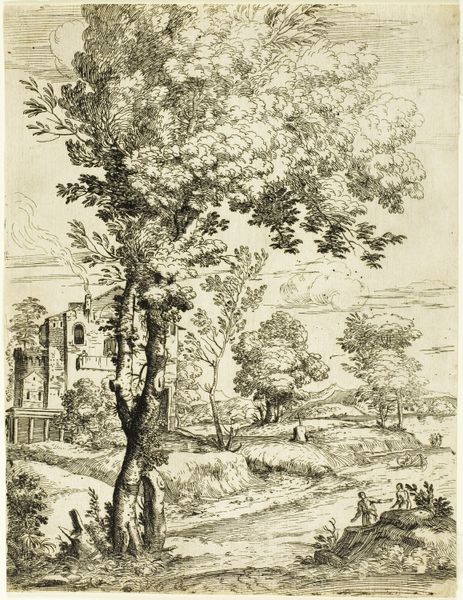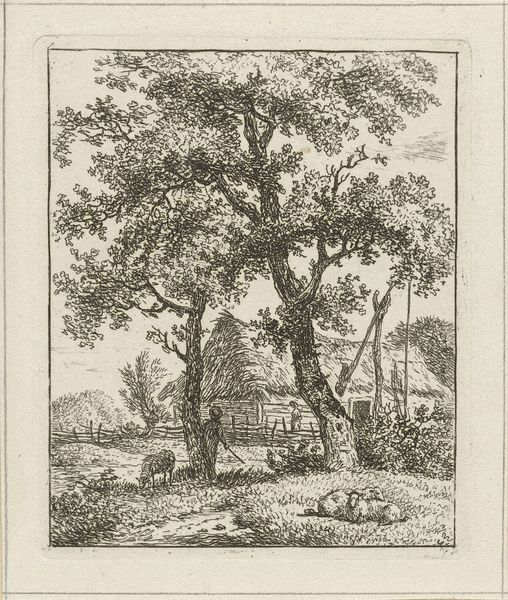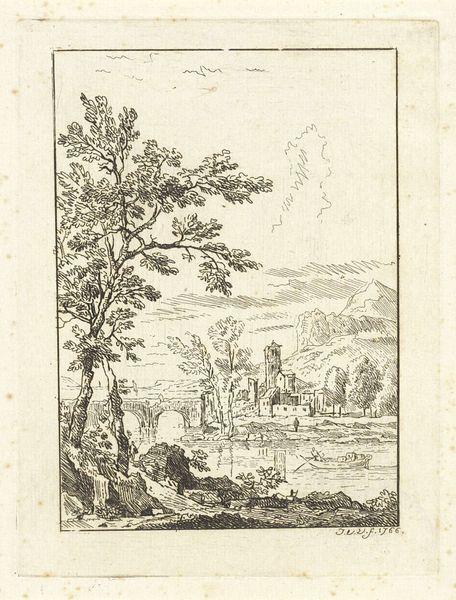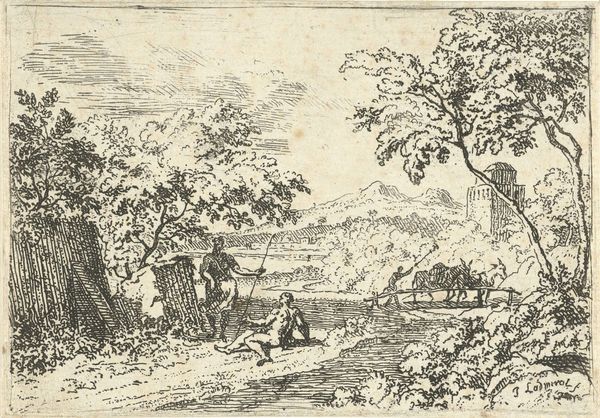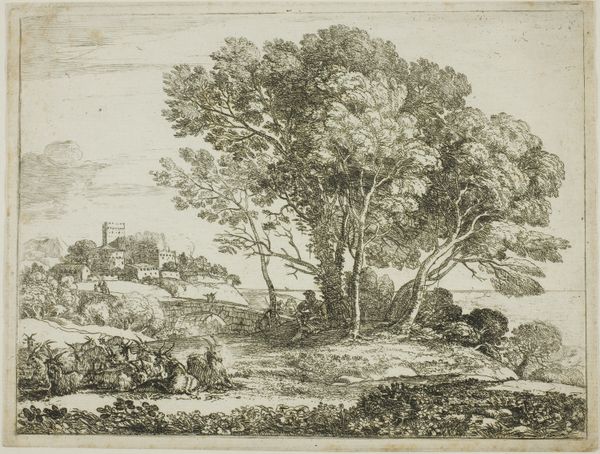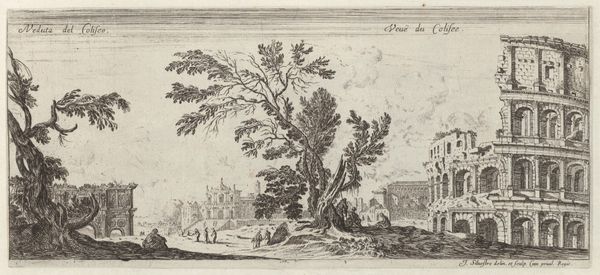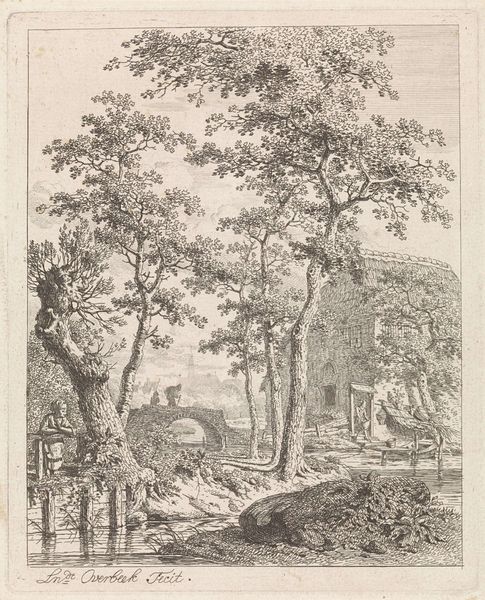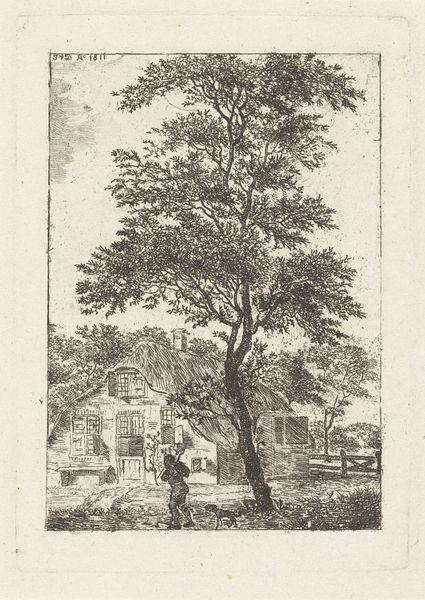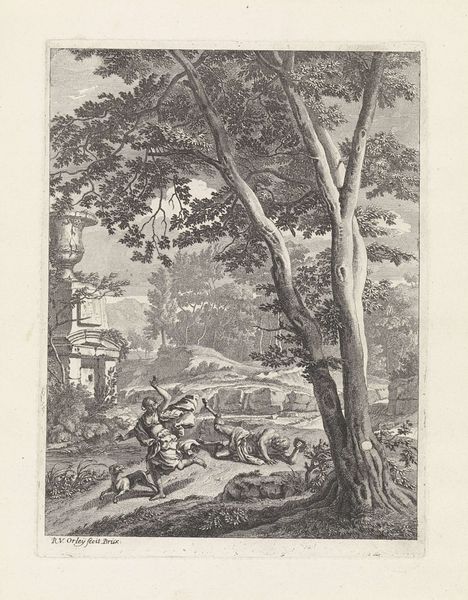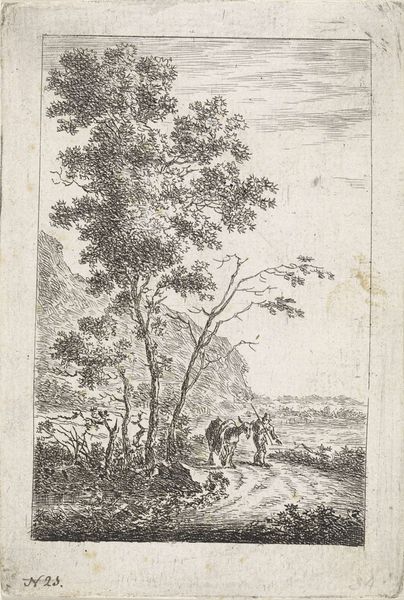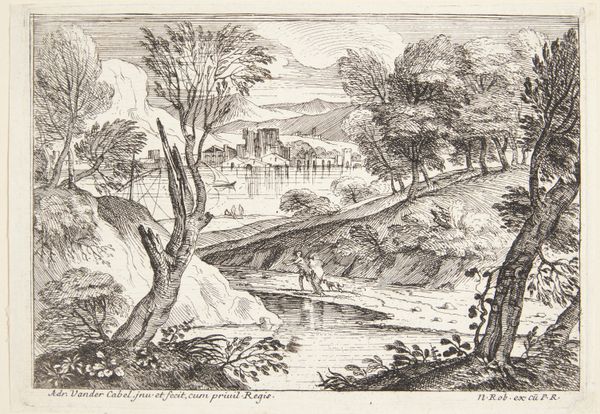
Design: Landscape Study, from Encyclopédie 1762 - 1777
0:00
0:00
drawing, print, etching, paper, engraving
#
drawing
#
neoclassicism
# print
#
etching
#
landscape
#
etching
#
paper
#
15_18th-century
#
engraving
Dimensions: 320 × 206 mm (image); 355 × 225 mm (plate); 400 × 260 mm (sheet)
Copyright: Public Domain
Editor: This is "Design: Landscape Study, from Encyclopédie" created between 1762 and 1777 by Benoit Louis Prevost. It's an etching and engraving, so black lines on paper. The lines are so delicate; they make me think of Chinese painting. How would you analyze the composition? Curator: Observe how the artist meticulously arranges the landscape into distinct layers. The foreground, dominated by the figure and tree, transitions to the middle ground with the bridge and buildings, finally resolving into a distant skyline. How does this layering guide your eye? Editor: It leads my eye to the background details and makes the whole scene deeper. But how important is the large tree in the composition? Curator: The tree acts as a repoussoir, a framing device drawing the viewer into the pictorial space. Its gnarled form, rendered with varied line weights, introduces a sense of depth and textural contrast against the smoother surfaces of the architecture. Can you detect how the lines differ in the leaves versus the trunk? Editor: I do. It seems as if they meticulously thought about the different kinds of lines for each texture. I guess without it, it wouldn't be as sophisticated or elegant? Curator: Precisely. Without such elements, the composition would lack a focal point and appear less visually compelling. The balance between natural elements and architectural forms also enhances the harmony within the artwork, which in turn draws the viewers' gaze through various intricate textures and forms within the depicted landscape. Editor: I learned so much about layering and lines. Thanks for sharing that perspective with me! Curator: It's a pleasure to explore these subtle structures with you, unveiling how composition governs our visual experience.
Comments
No comments
Be the first to comment and join the conversation on the ultimate creative platform.
